A sim card and a memory card are inserted into it. The built-in 4G router provides it with the Internet (and at the same time it can distribute the Internet to other cameras, smartphones and any gadgets), the built-in recorder records videos on the move or continuously. The video from the camera can be viewed in the mobile application through the cloud service.
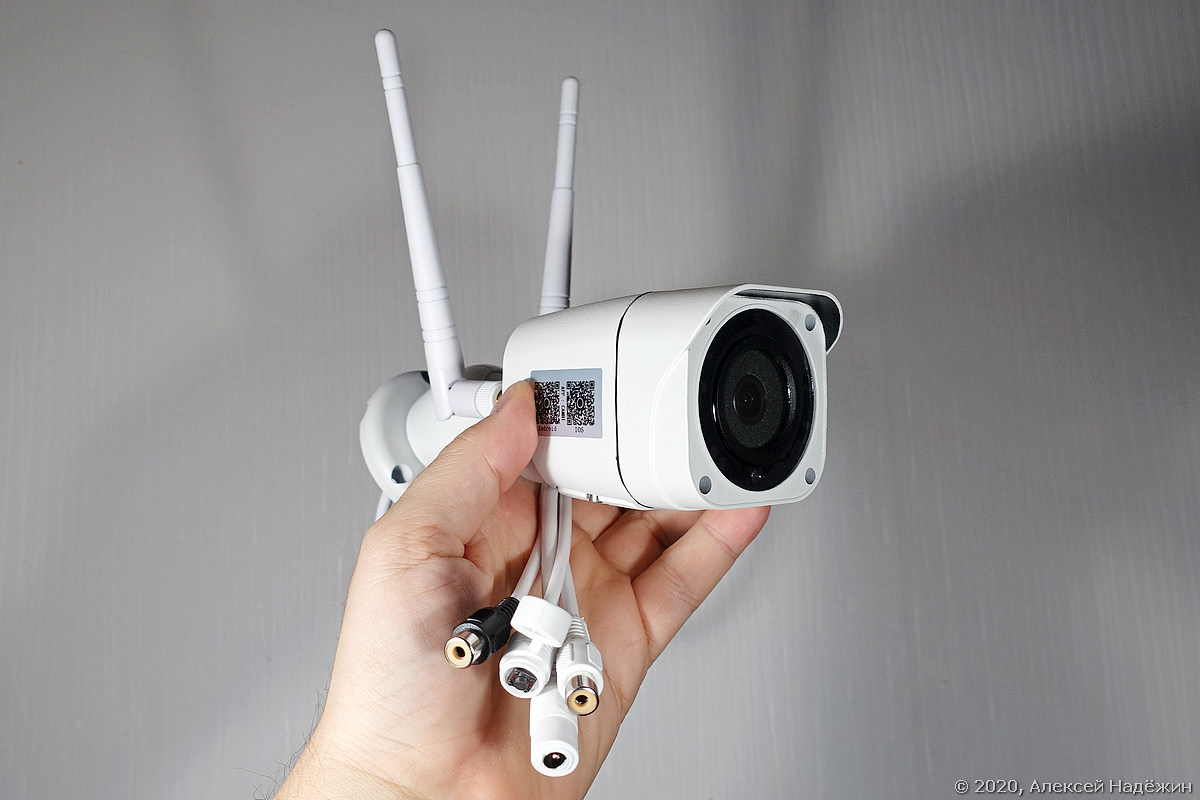
I have long wanted to study cameras with built-in modems and for my acquaintance I chose the most popular model on Aliexpress. Now it costs $ 66.70, I bought it during the sale using coupons for $ 48.94.
The camera shoots FullHD video (2 MP, 1920x1080 pixels) 15 frames per second, allows you to listen to sound and transmit audio messages to the object of observation, it has a 3.6 mm lens (angle of view is about 90 degrees), there is a night shooting mode. The camera works with the CamHi app.
Thanks to the sealed metal housing, the camera can be used both indoors and outdoors. There are ten infrared LEDs and a light sensor in a circle around the lens, thanks to which the camera “sees” even in complete darkness.
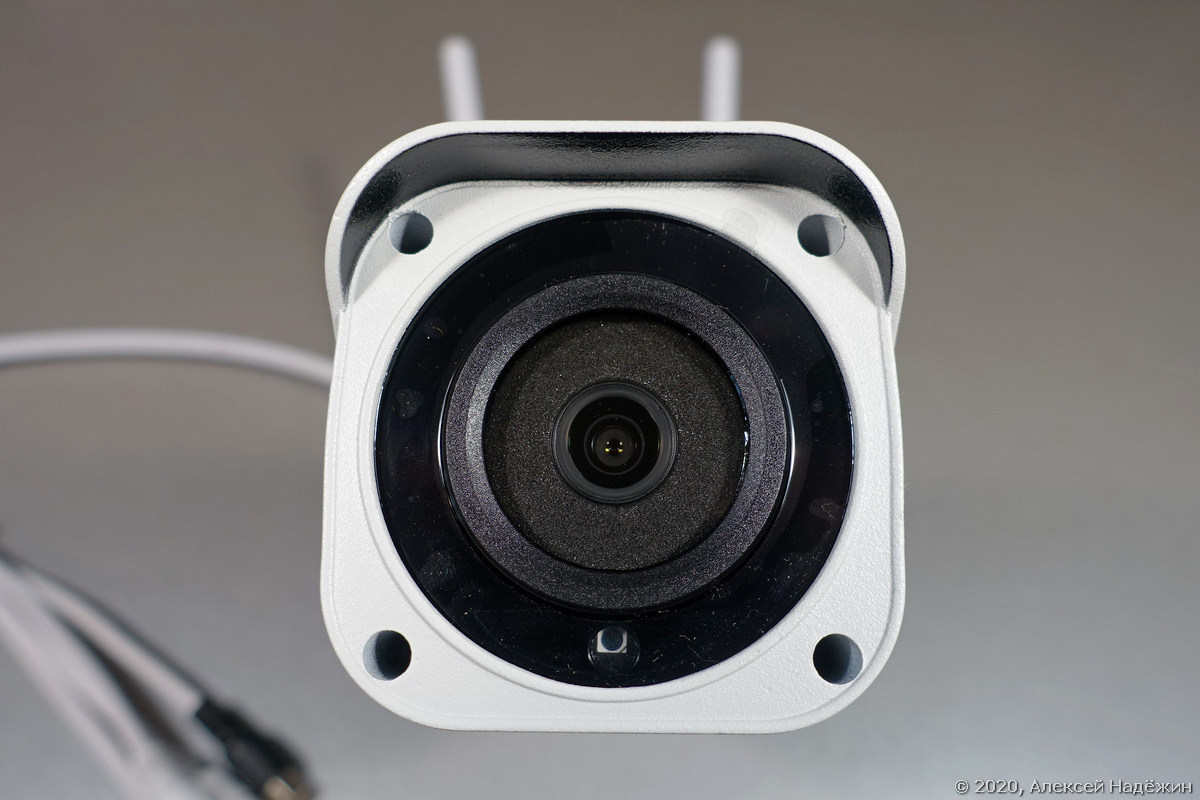
The kit includes a 12V 2A power supply (although the camera consumes much less) with a European plug.
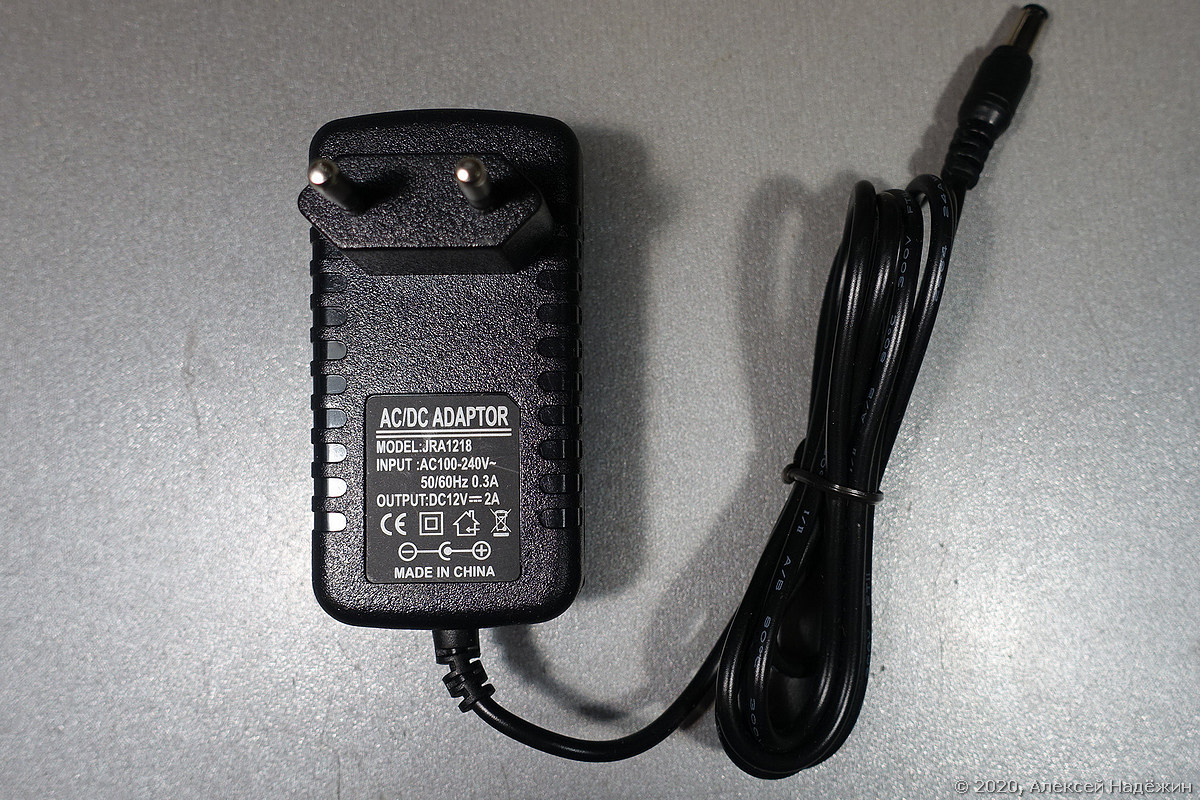
Also included are instructions, a hex wrench and a set of screws and dowels.
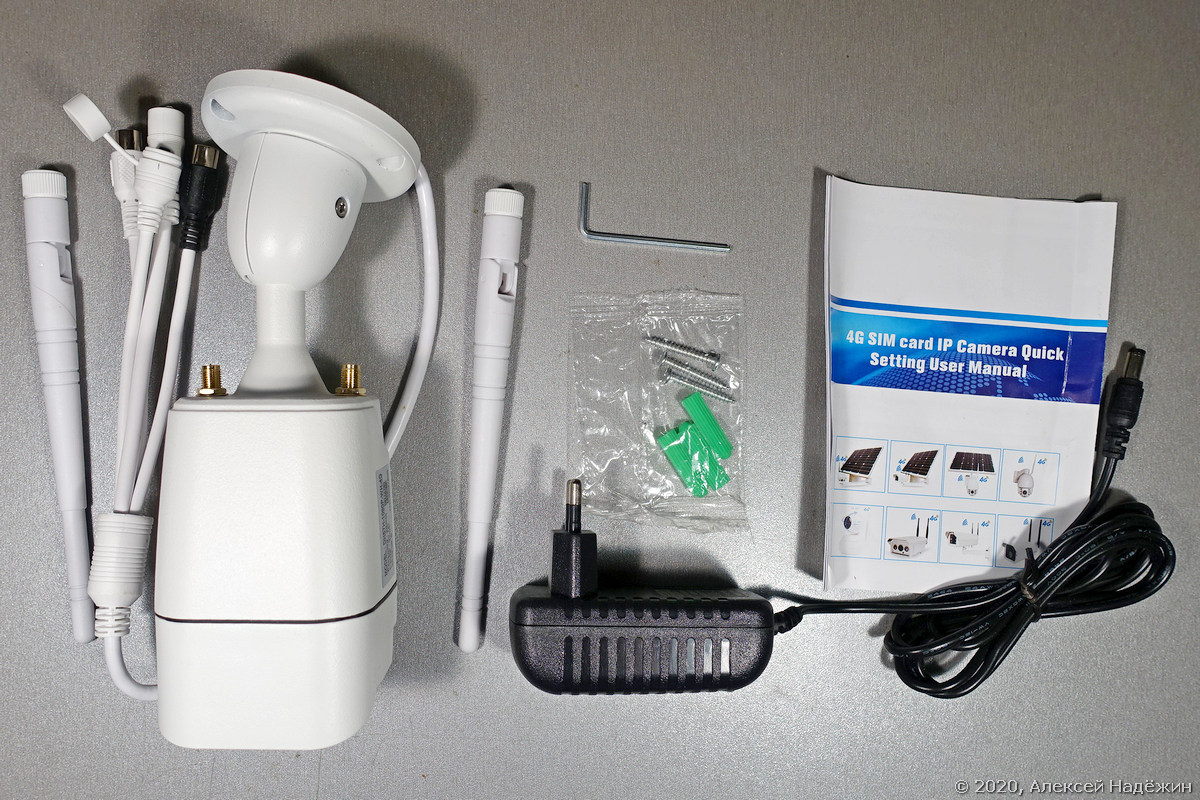
At the bottom of the camera there is a hatch, behind which there are connectors for NanoSim and MicroSD, on the hatch itself there is a speaker and a microphone.
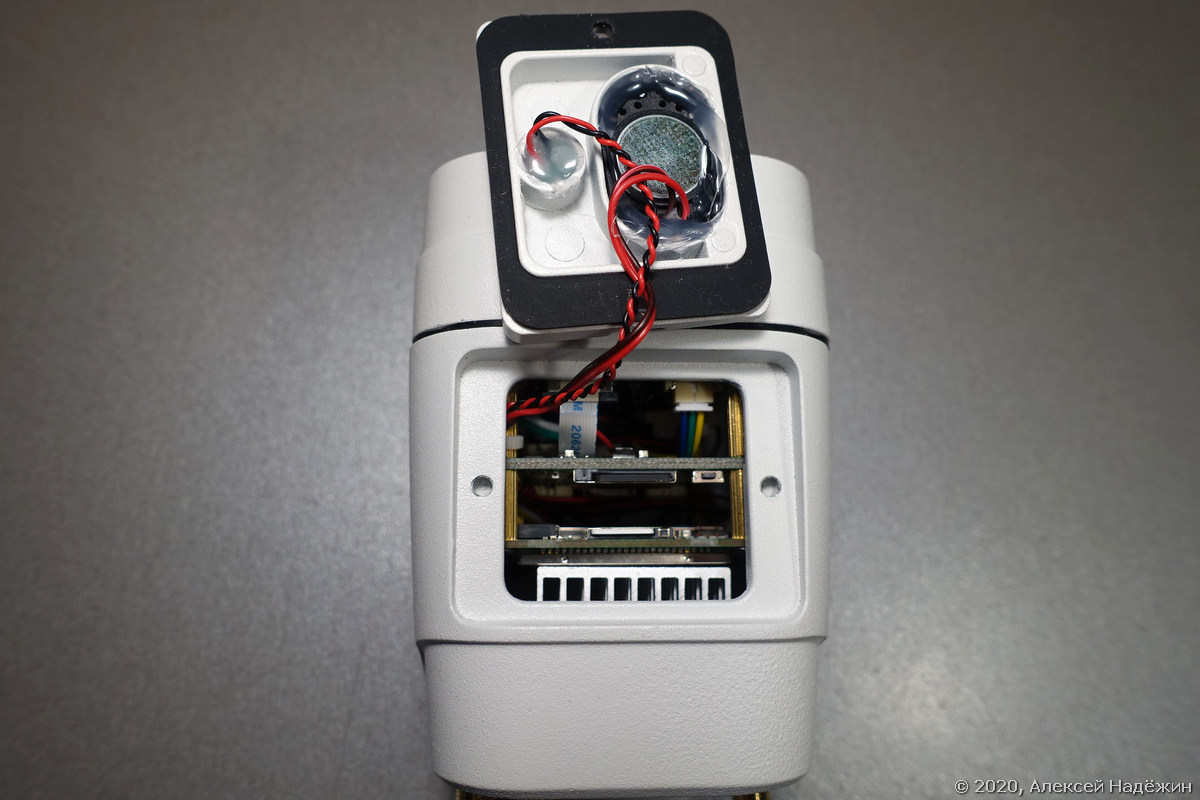
The camera has two detachable antennas: if you look from the back, the right antenna is 4G, the left one is Wi-Fi distribution (if Wi-Fi is not needed for other devices, this antenna can be omitted).
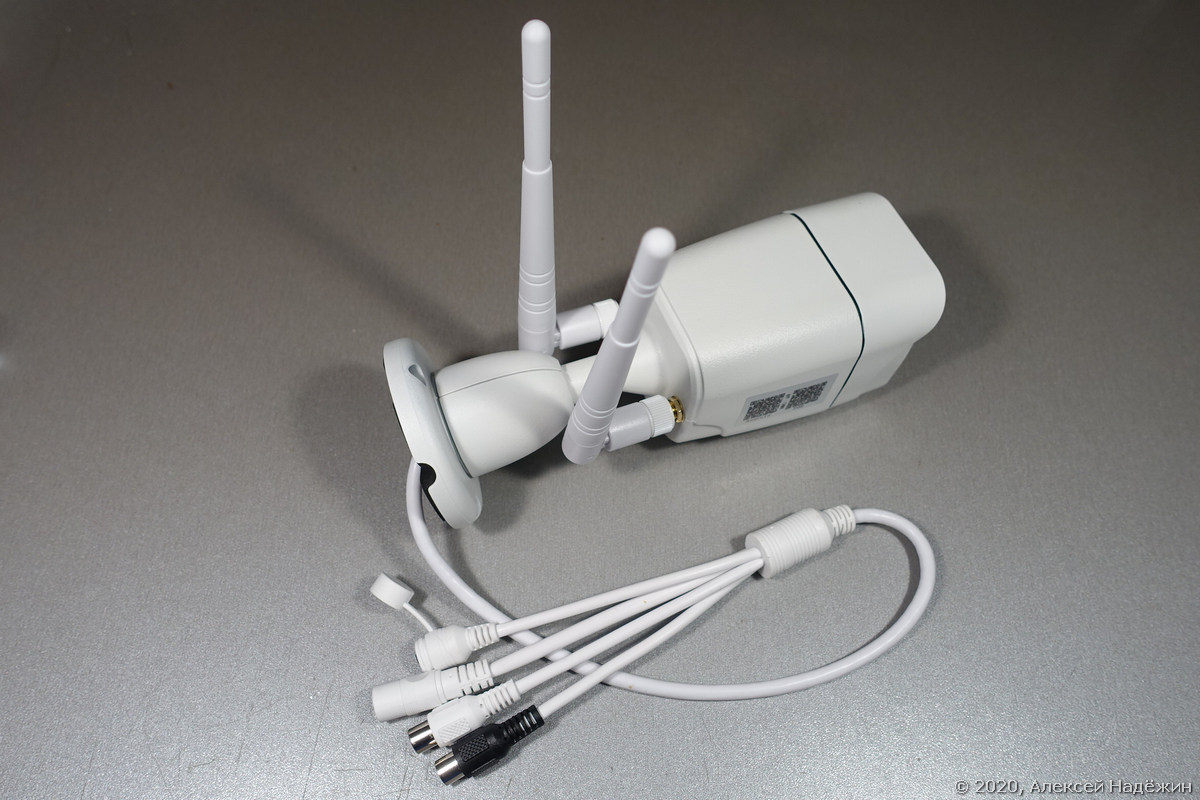
A cable with three connectors and a reset button comes out of the camera, but the two tulip connectors are not used. In fact, a single power connector will be used during camera operation.
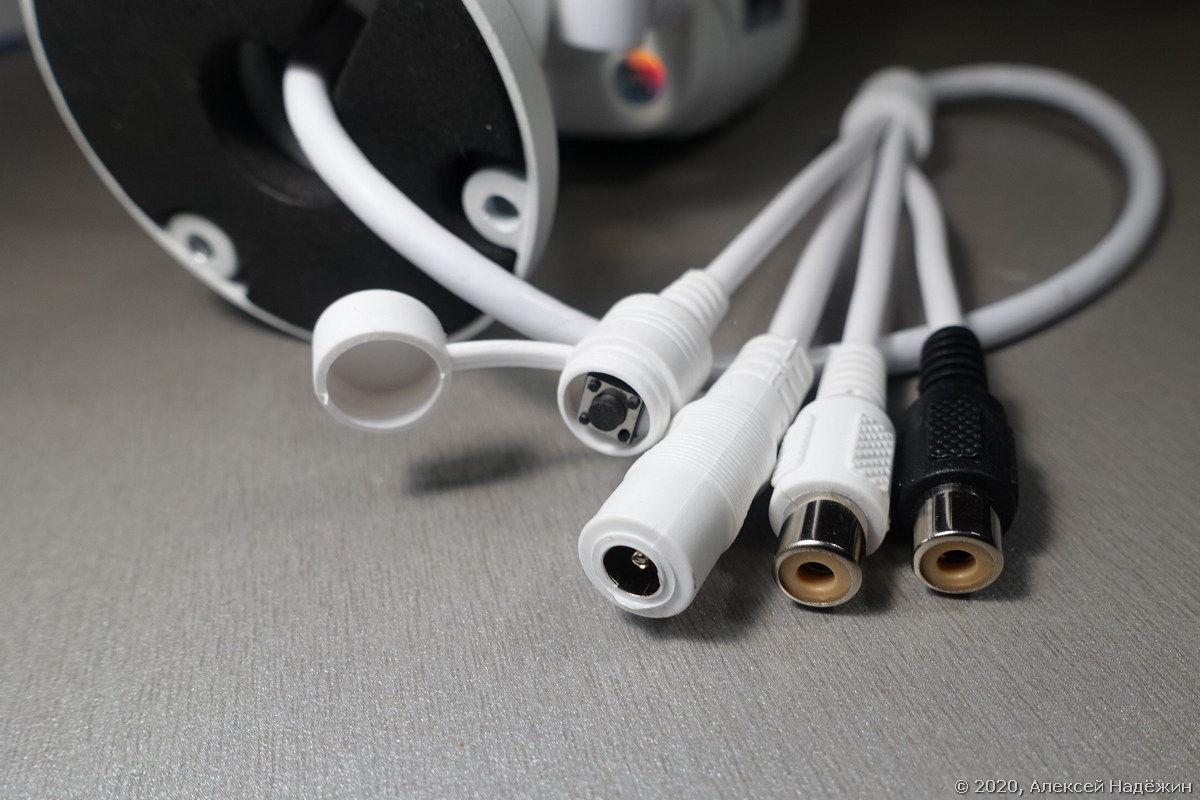
The initial setup is so simple that even a person who is far from technology can easily cope with it:
- We insert a sim card and a memory card into the camera, turn on the camera.
- Install the CamHi application on your smartphone (registration is not required), give it all permissions.
- Click on the top "Add.cam." and "scan. QR code ext. UID ". We point the smartphone camera at the QR code on the label on the side of the camera or on the box.
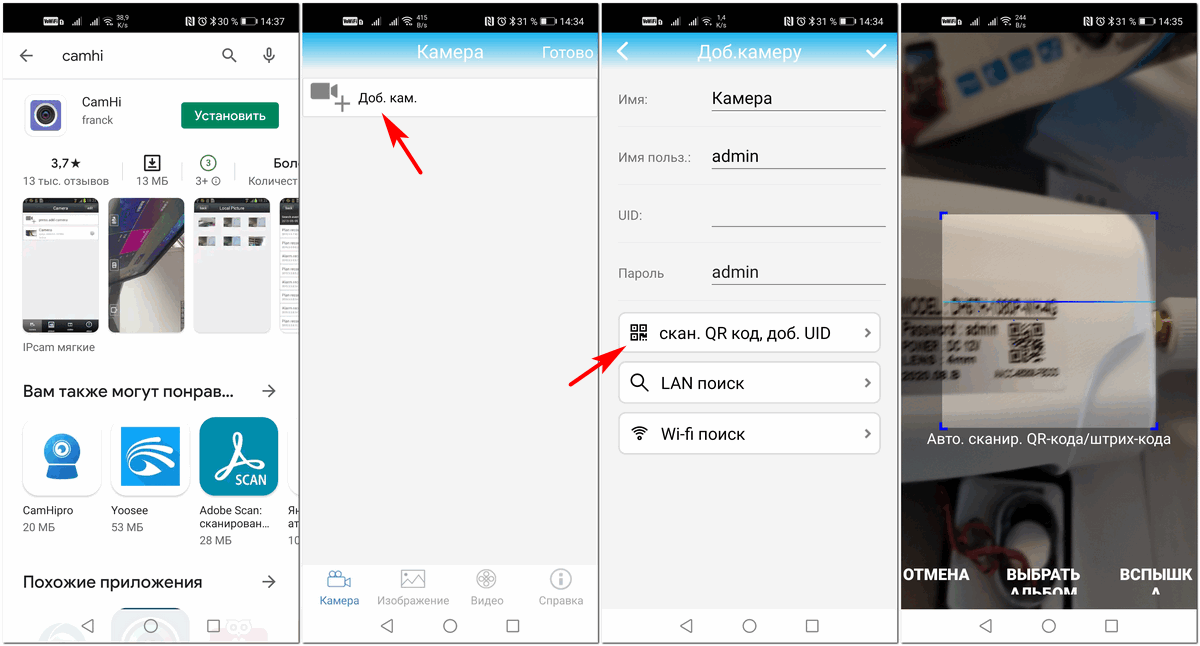
- As soon as the QR code is read, the code reading window will disappear and the unique camera number (UID) will appear in the corresponding field. Click the checkbox in the upper right corner. The camera will offer to change the time zone, advise you to set a password, and will appear in the list of devices.
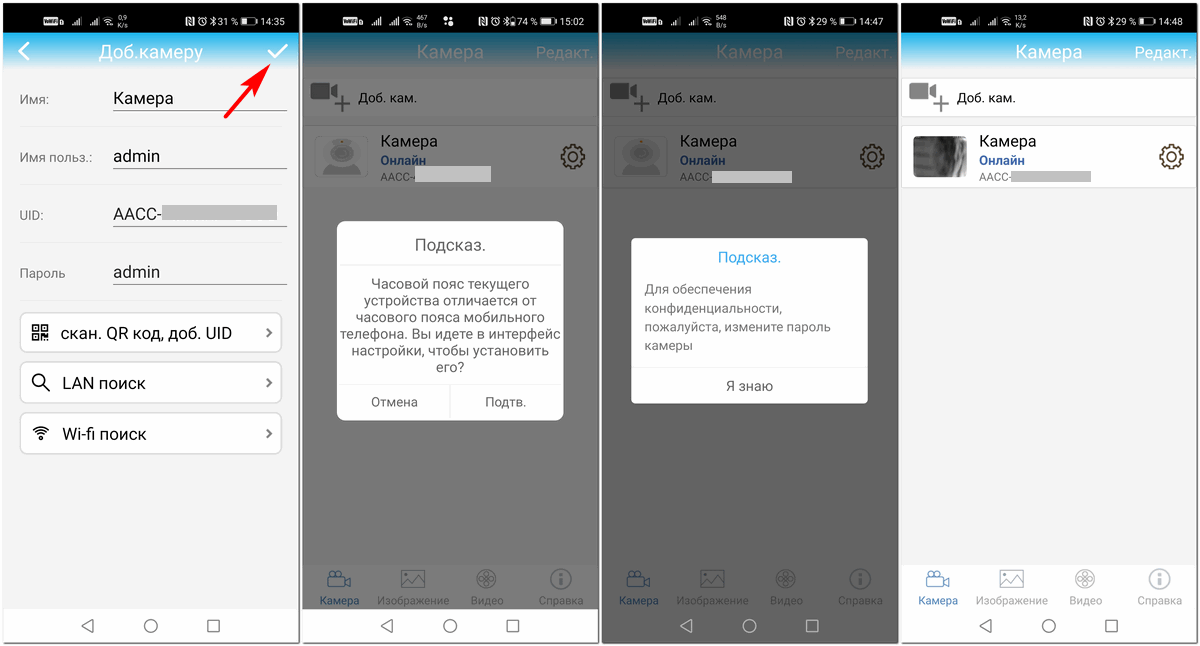
Now, just click on a camera in the list and a full-screen video viewing window from the camera will open (initially in low quality SD mode).
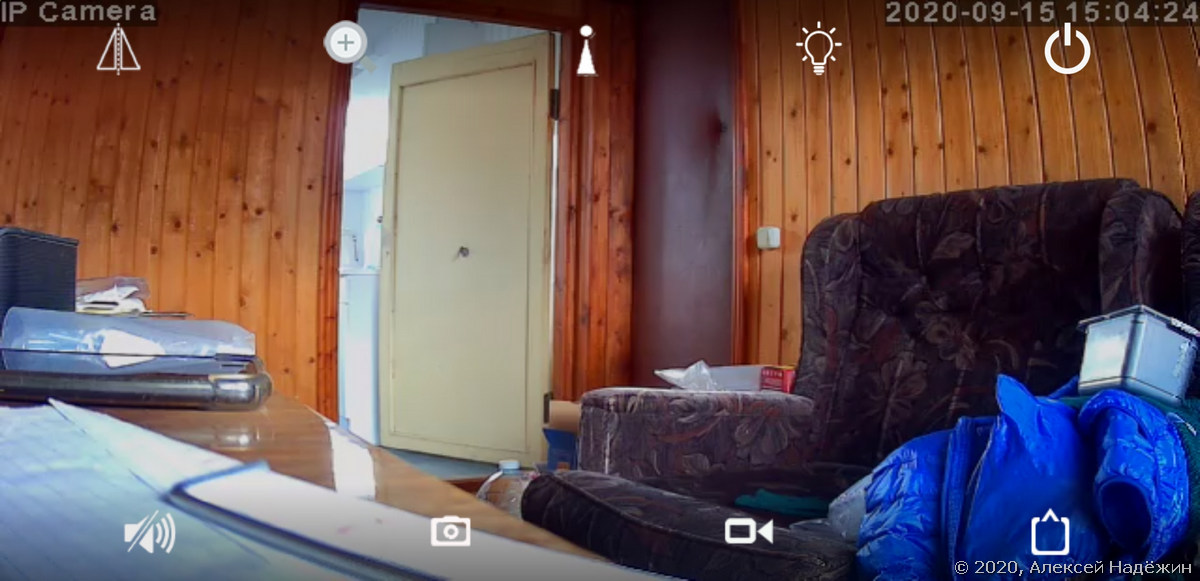
In the viewing mode, everything is simple, I will not describe all the points, you can figure it out by typing.
There is a gear next to the camera in the list, when you press it, the camera settings menu opens. There you first need to set a password (if you do not want strangers to be able to watch the picture from your camera), then you need to turn on the motion detector in the “Settings. alarm ". In "Action. in case of alarm ", you need to enable SD recording (the upper" Alarm notifications "engine enables push to the smartphone with each motion detection, the lower" Action upon alarm "enables the camera to play sounds when motion is detected (dog barking, siren, its own sound recorded from the smartphone microphone If you want the camera to record video only when motion is detected, you need to go to the next item "Recording schedule" and turn off recording (when the "On recording" slider is turned on, recording to the card is performed continuously according to the schedule).All other items of the settings menu can be left untouched.
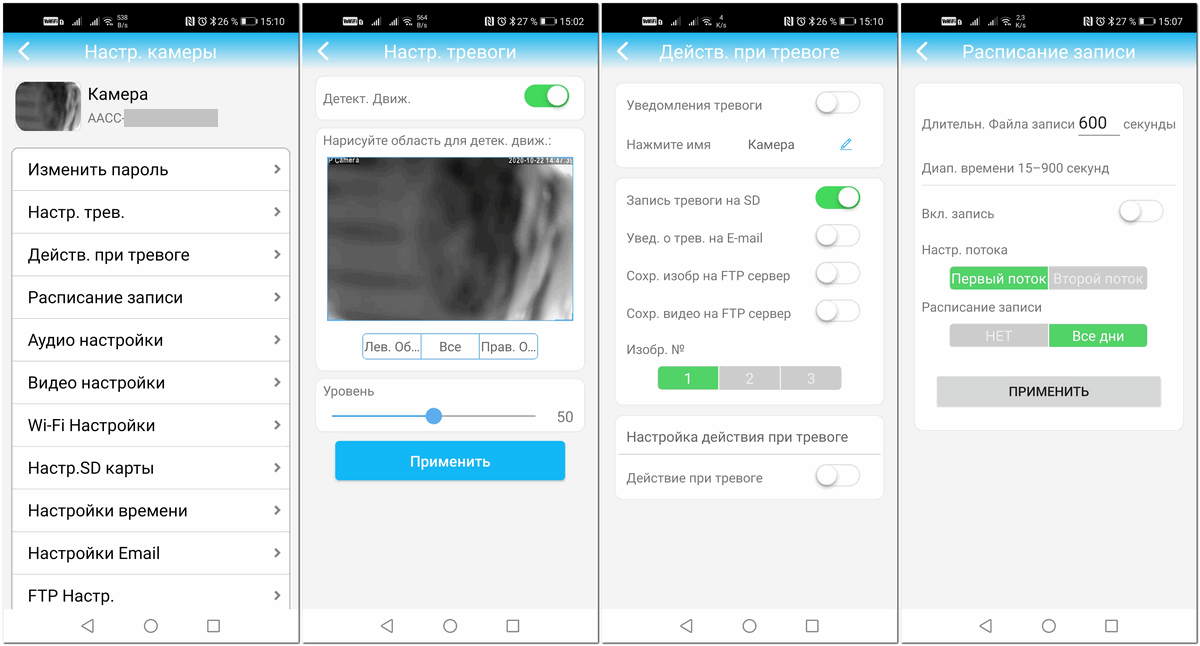
Everything seems to be set up and everything works. But there is one more thing. All such cameras have a default Wi-Fi password of "123456789". Anyone who knows about this, having found a network with a name starting with "MIFI_" can connect to it and use up all your Internet traffic. In the reviews on Aliexpres they write that the password cannot be changed. Of course, you can and should change it:
- We connect a smartphone or laptop to the camera's Wi-Fi: the network name is MIFI _ **** (instead of asterisks there will be letters and numbers), the password is 123456789.
- Launch the browser and go to 192.168.100.1, a password entry window appears, enter admin and get into the interface of the built-in router.
- Click "Wi-Fi Setings", get to the Wi-Fi settings screen, change the password there and click "Apply".
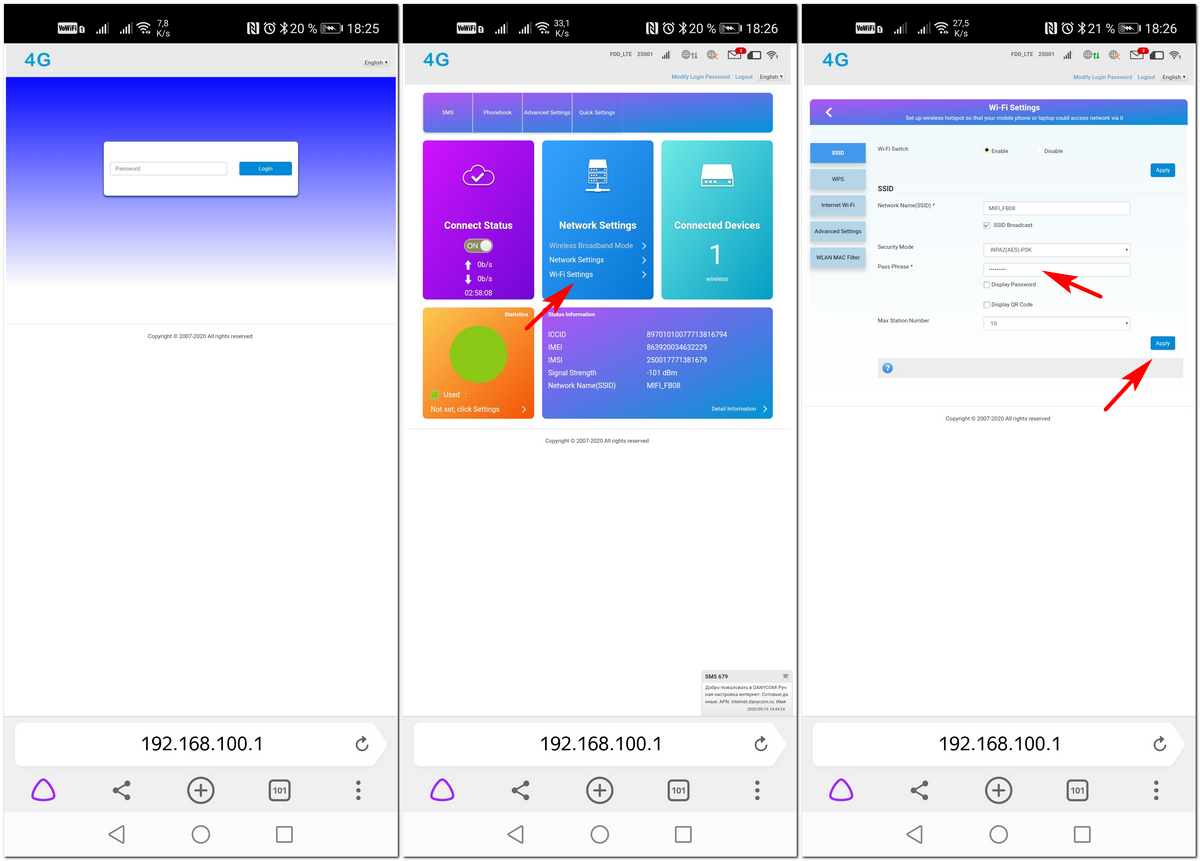
This will not affect the operation of the camera in any way, since its module is connected to the router by wires, and not via Wi-Fi. If desired, Wi-Fi can be turned off altogether, then to turn it on, you will need to press the Reset button on the router board (you can reach it without disassembling the camera).
By the way, at 192.168.100.100 you can get into the web-interface of the camera itself (login admin, password admin), but there is nothing interesting there.
To check the quality of shooting and sound recording, I installed a camera in the country. This is how she shoots during the day.
And so at night.
I'll tell you about how the camera works. There are as many as four boards in it: IR illumination, camera module, recorder, modem-router. A dangling wire with an unconnected connector comes from the "tulips" on the cable (I already wrote above that they are not used).
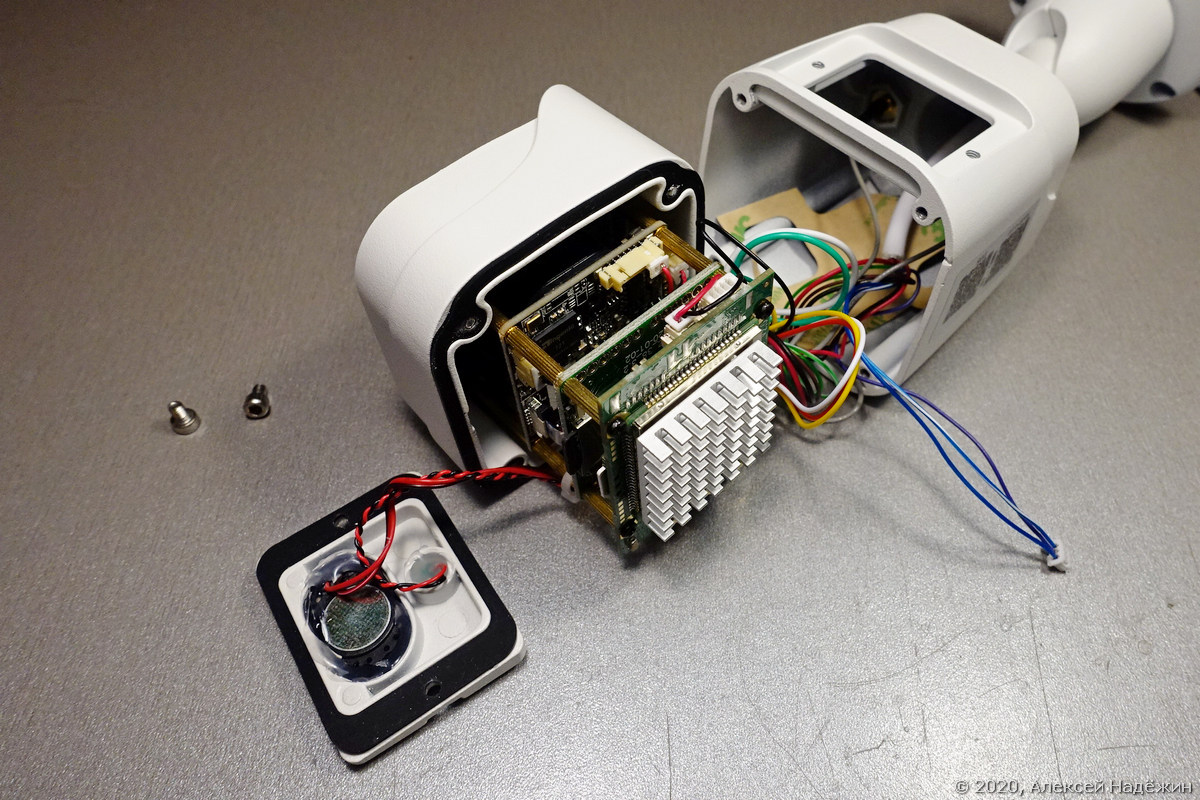
The camera module is built on a rather rare Ingenic T21 processor. The seller claims that the module uses a SONY sensor, but I doubt it very much. I did not find any designations on the module board.
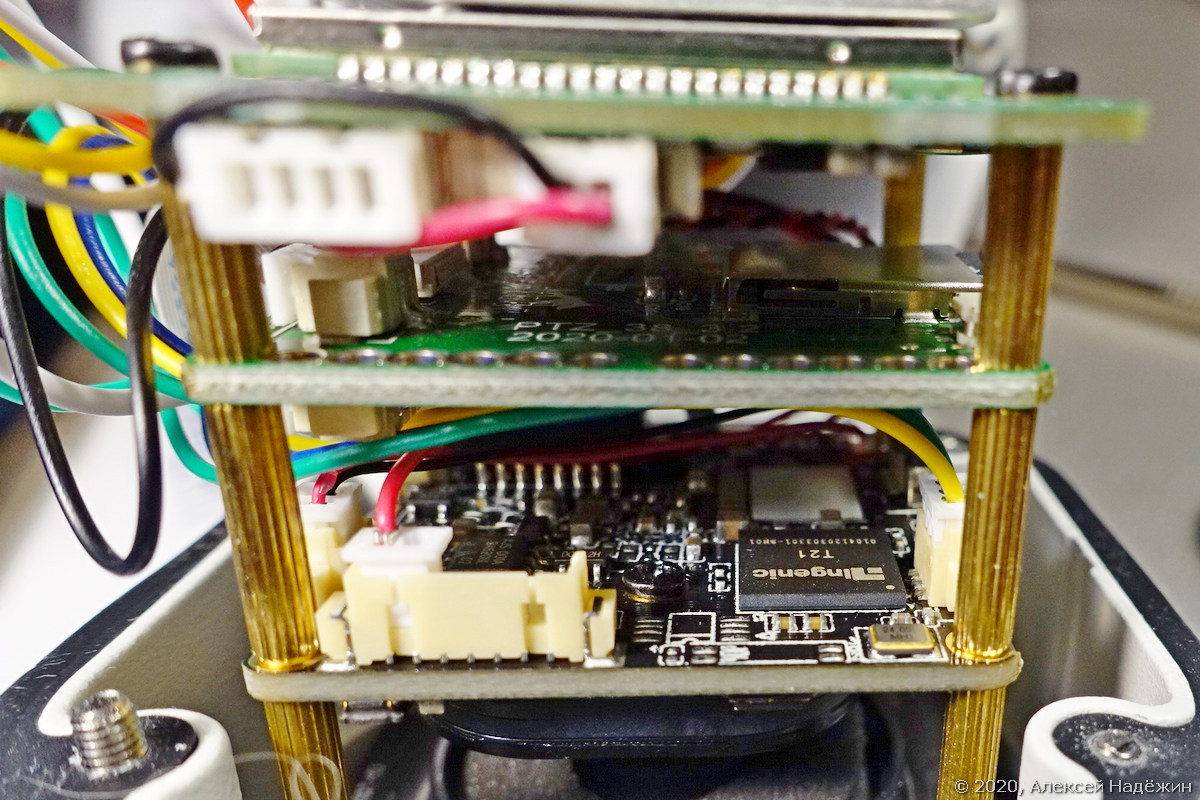
The DVR board into which the microSD card is inserted is called PTZ_38_3.2.
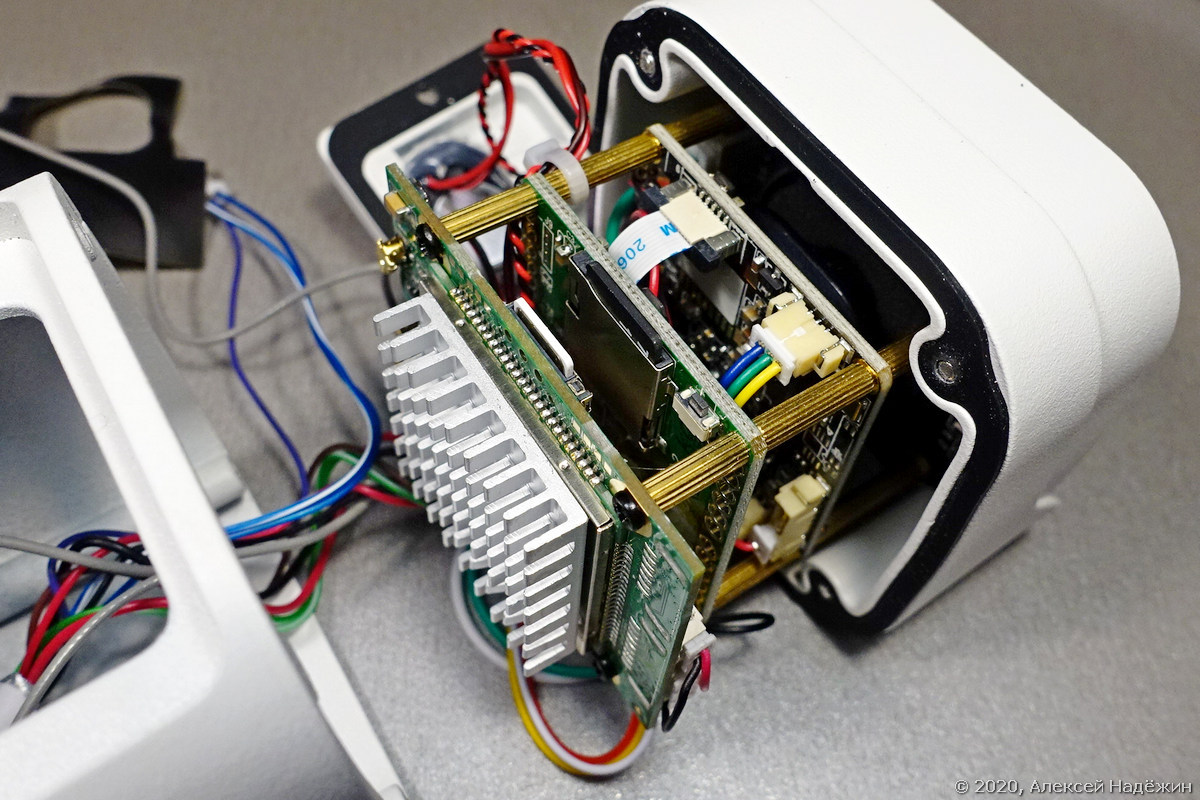
And the last board is the ALK_AF790_V2.0 4G modem router.
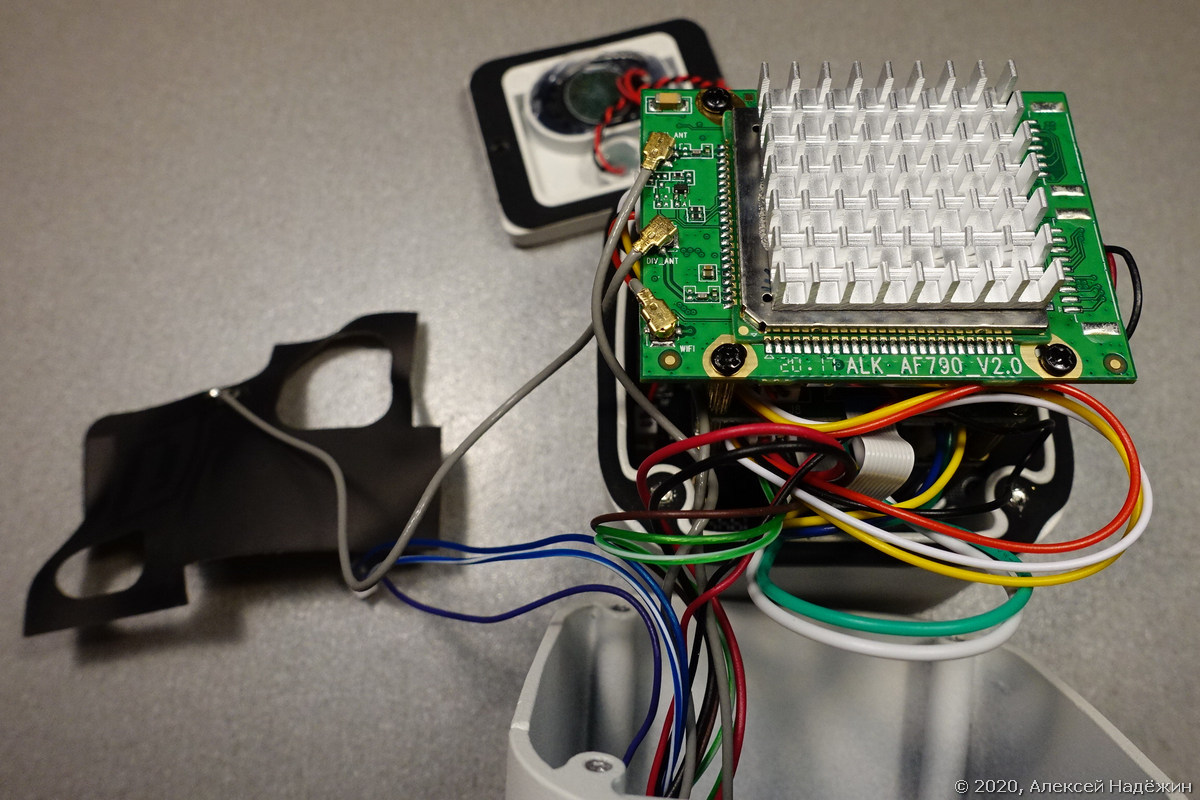
The router has three antenna outputs. Two external antennas are connected to the 4G and Wi-Fi outputs, and that strange black thing with holes is connected to the 3G output. It looks like it's a film antenna from some kind of mobile phone. In the chamber, it is located inside the case at the top of it.
Such router boards are sold on Aliexpress and separately, cost about $ 36.
The camera can be powered from any 12 volt power source or from the mains through a standard adapter. I measured the consumption of the camera from 12V. In normal monitoring mode, the camera consumes 140-220 mA (maximum when viewing through a mobile application). In night mode, about 400 mA.
If the camera is not used to distribute Wi-Fi to other devices, a very small amount of Internet traffic is enough for it. When there is no viewing through the application, the traffic consumption is minimal, while the traffic increases, but a cheap tariff for smart devices (100 or 200 MB per month) will be enough for it and you will not need to connect the paid option "video surveillance".
Such a camera will be an excellent and inexpensive solution where there is no Internet and a single camera is enough (for example, in a garage). However, it can also be used to build wireless video surveillance with several cameras (then the rest of the cameras can only be with Wi-Fi and they will connect to this camera as to a router). You can even try to make a video surveillance system based on this camera with an external recorder, connecting this and other cameras to it via Wi-Fi, and the camera itself will be the source of the Internet.
And Wi-Fi distributed by such a camera can be useful for smart devices (automation, alarms, temperature monitoring).
PS I deliberately do not give links and do not indicate the name of the camera. There are many clones of her under different names on Ali, you will find it without problems.
© 2020, Alexey Nadezhin